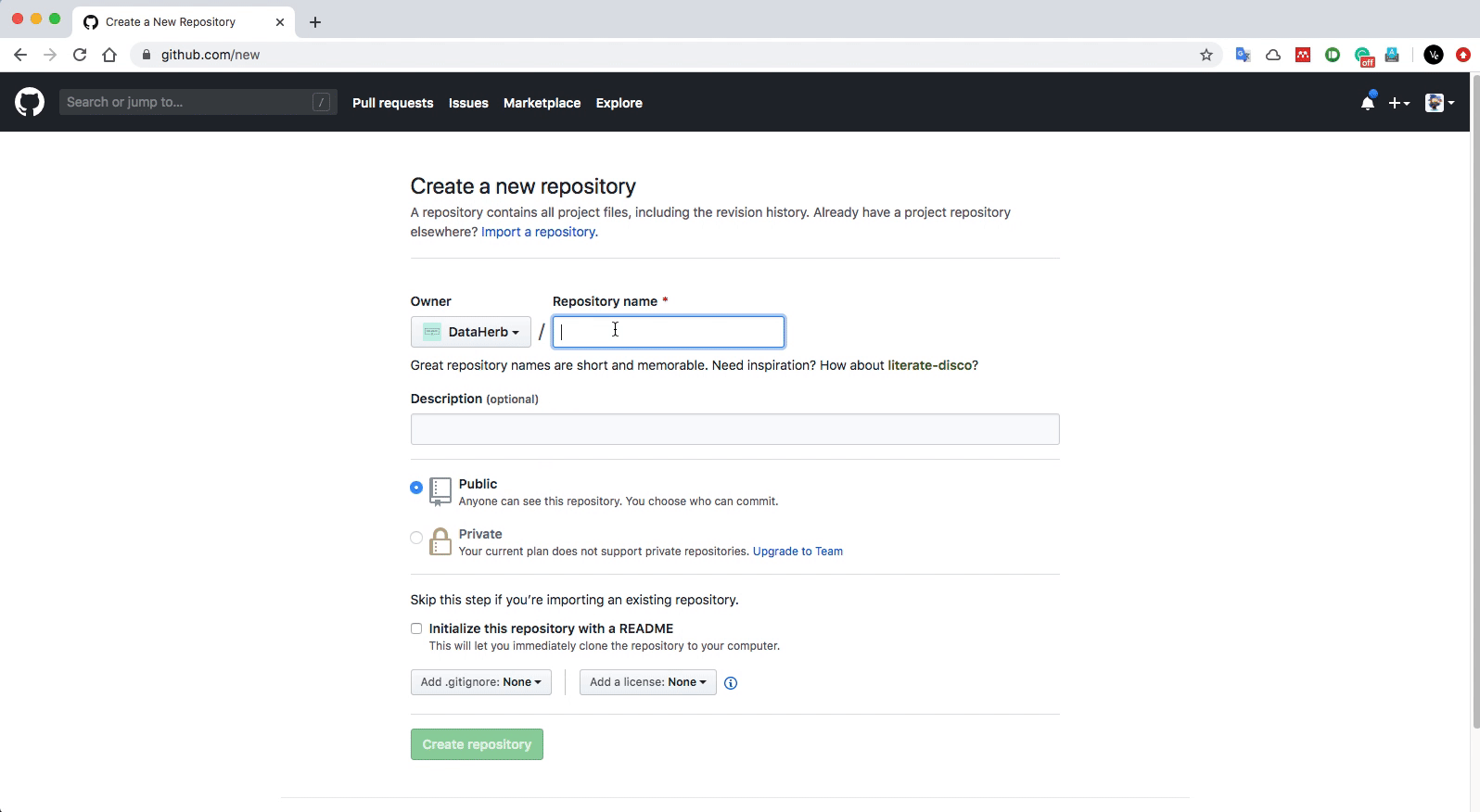- Overview: List Your Dataset on DataHerb
- Next step: Add Your GitHub Repository Name to DataHerb
Create your GitHub repository to host your data
If you have generic questions about GitHub, please leave a comment so we could improve this tutorial.
If you prefer to learn from examples, simple copy everything from this repo InterImm/dataset-planets-in-solar-system and adapt.
If you prefer to use the web interface of GitHub
- Go to github.com and click on the + on the top right
-
Create a repository for your data. GitHub Help

- Create a folder to hold your data file, in this example, we will create a fold called
dataset. Click on theCreate new filebutton, and type indataset/.githold. This will creae a folder calleddatasetand place a file called.githoldinside it.Upload your data file into this folder by clicking on button
Upload files. -
Create a
.dataherbfolder in the root of your repository. Now the folder structure should be. ├── README.md ├── .dataherb ├── dataset └── your_data_file -
Create a file
metadata.ymlin the.dataherbwith the following content:name: [Name of your dataset] description: [Describe your dataset here] contributors: - name: [Name of the the first contributor] data: - name: [name of your data file, optional] description: [description of your data file, optional] path: [path_to_your_data_file.csv] format: csv size: [size of your data file] fields: - name: [name of the first colomn] description: [description of the first column] - name: [name of the second colomn] description: [description of the second column] - name: [name of your second data file, optional] description: [description of your second data file, optional] path: [path_to_your_data_file.csv] format: csv size: [size of your data file] fields: - name: [name of the first colomn] description: [description of the first column] - name: [name of the second colomn] description: [description of the second column] license: - name: [Name of the license of the dataset] link: [Link to the license page] references: - name: [Name of the first reference] link: [https://link_to_your_first_reference]As an example, one could use similar contents as in this demo project InterImm/dataset-planets-in-solar-system.
If you prefer to use the command line
If you use command line for git, the precess is more or less the same. However, there is at least one advantage of using the command line. We have created a command line tool to help you generate the metadata.
- Install the dataherb python package:
pip install dataherb. - Place the data files in a folder like
datasets. - In the root folder of your repo, use the command
dataherb createand follow the guidlines.
Next Step
After creating the repository, you could link your dataset with DataHerb index very easily. Please read the Next Step: Add Your GitHub Repository Name to DataHerb.